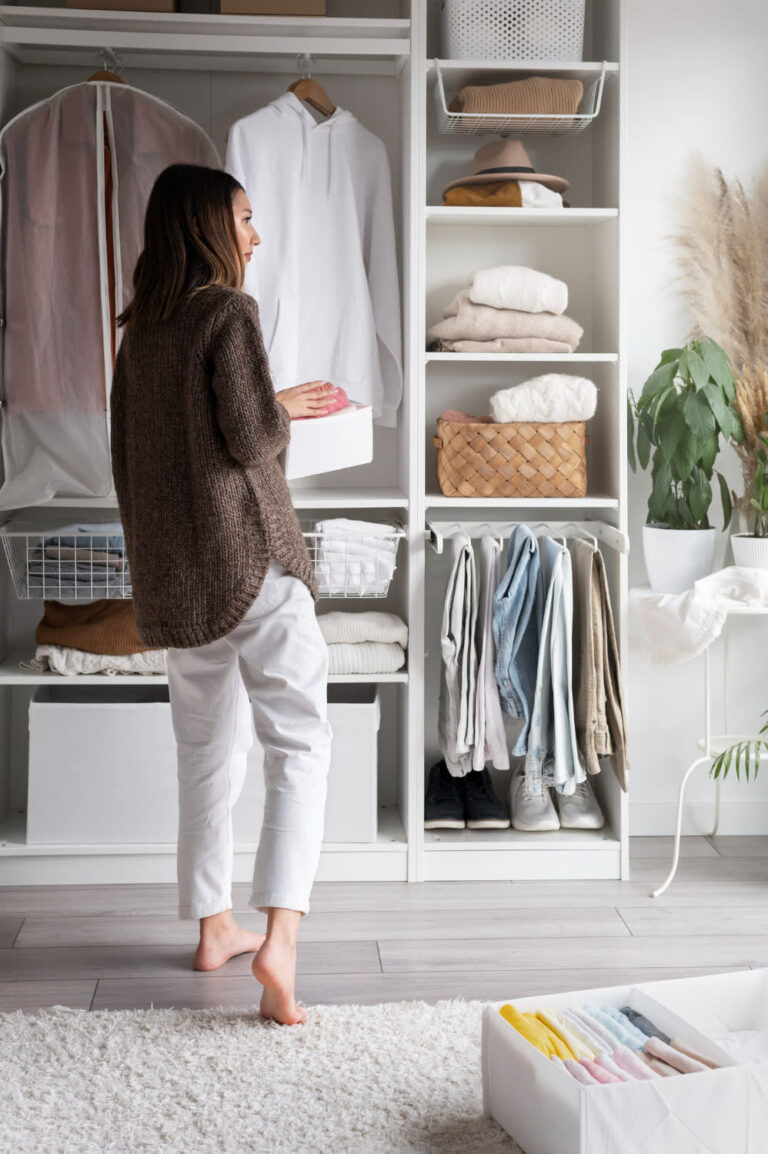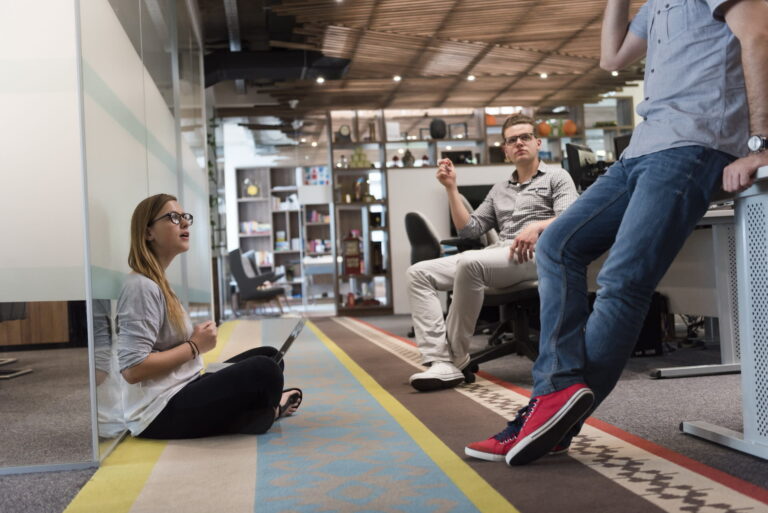- Flooring Options
- |
- Flooring Store
- |
- Mold Prevention
How to Choose Mold-Resistant Flooring in Hawaii
June 17, 2025

Hawaii’s lush, tropical climate is a paradise for many, but the constant humidity presents a unique challenge for homeowners: mold. This persistent adversary can not only damage your beautiful floors but also impact indoor air quality and overall home health. When it comes to home remodeling in Honolulu, Kaneohe, Kailua, Mililani, and Aiea, selecting mold-resistant flooring isn’t just a preference – it’s a necessity.
Understanding Hawaii’s humidity and its impact on flooring
Hawaii’s average relative humidity often hovers between 63-81% year-round, and can climb even higher in windward areas. This high moisture content in the air creates an ideal breeding ground for mold and mildew, which can thrive on damp surfaces within a mere 24-48 hours.
Traditional flooring materials like solid hardwood can be particularly susceptible. They absorb moisture, leading to warping, buckling, and even the development of unsightly gaps. Laminates, if not specifically designed for high humidity, can delaminate, and even some vinyl products can suffer if their core isn’t truly impervious to water. Beyond the visible damage, persistent mold growth can lead to musty odors and trigger allergies or respiratory issues.
Therefore, choosing the right flooring involves more than just aesthetics; it’s about investing in the longevity, durability, and health of your Hawaiian home.
Key characteristics of mold-resistant flooring
When seeking mold-resistant flooring, there are several crucial characteristics to prioritize:
-
Waterproof vs. Water-Resistant: This is a vital distinction. Water-resistant flooring offers a degree of protection against spills, allowing time for cleanup before damage occurs. Truly waterproof flooring, however, is engineered with a core that prevents water from penetrating, even if standing on the surface for extended periods. In Hawaii’s humid environment, a truly waterproof core is highly recommended.
-
Low Porosity: Materials that are less porous absorb less moisture, making them less hospitable for mold growth.
-
Durability and Stability: The best mold-resistant options are those that can withstand the constant changes in temperature and humidity without deteriorating, expanding, or contracting significantly.
-
Easy to Clean and Maintain: Floors that are simple to clean and dry quickly help prevent moisture from lingering, thus inhibiting mold and mildew formation.
Top mold-resistant flooring options for Hawaiian homes
With these characteristics in mind, here are some of the most effective mold-resistant flooring options for Hawaii:
Luxury Vinyl Plank (LVP) and Luxury Vinyl Tile (LVT)
LVP and LVT have revolutionized the flooring industry, offering remarkable versatility and performance. Modern LVP/LVT is engineered to mimic the look of natural wood or stone, providing a stylish aesthetic without the moisture concerns.
-
Waterproof Core: Many LVP/LVT products, especially those with WPC (Wood Plastic Composite) or SPC (Stone Plastic Composite) cores, are genuinely waterproof. WPC offers a comfortable underfoot feel and good sound absorption, while SPC is known for its ultra-dense, rigid core, providing exceptional stability and indentation resistance, making it virtually impervious to expansion and contraction from humidity fluctuations.
-
Durability: LVP/LVT is highly durable, resisting scratches, stains, and fading, making it ideal for high-traffic areas and busy households.
-
Easy Maintenance: These floors are incredibly easy to clean, requiring only regular sweeping and occasional damp mopping.
Porcelain and Ceramic Tile
Tile has long been a go-to for humid climates, and for good reason.
-
Low Water Absorption: Porcelain tiles, in particular, are fired at high temperatures, resulting in a very dense and low-porosity material with a low water absorption rate. This makes them highly resistant to moisture and mold.
-
Cooling Properties: Tiles remain naturally cool underfoot, a significant advantage in Hawaii’s warm climate.
-
Durability: They are extremely durable, resisting scratches, stains, and heavy foot traffic.
-
Versatility: Available in an extensive range of colors, patterns, and textures, including designs that mimic wood or stone, offering diverse aesthetic possibilities.
Engineered Hardwood (with proper consideration)
While solid hardwood can be problematic in high humidity, engineered hardwood offers a more stable alternative.
-
Multi-Layer Construction: Engineered hardwood is constructed with multiple layers of wood veneer stacked and glued in opposing directions, often with a plywood or fiberboard core. This cross-ply construction makes it more stable and less prone to warping or gapping than solid wood when exposed to moisture fluctuations.
-
Protective Layer: Many engineered hardwood products include a protective layer that acts as a barrier against moisture, preventing it from seeping into the wood fibers.
-
Important Note: For Hawaii, it’s crucial to select engineered hardwood specifically designed for humid environments, often featuring marine-grade adhesives and superior moisture barriers. Proper subfloor preparation and professional installation are paramount to prevent issues.
Concrete Flooring
Often seen in modern or industrial designs, polished and sealed concrete flooring is gaining popularity for its practicality in humid climates.
-
Natural Moisture Resistance: Concrete is inherently resistant to moisture.
-
Durability: It is extremely durable and can withstand significant wear and tear.
-
Cooling Effect: Concrete floors stay cool, which is a big plus in warm weather.
-
Sealing is Key: To maximize mold resistance and prevent staining, concrete floors must be properly sealed.
Essential installation considerations for mold prevention
Even with the most mold-resistant flooring materials, proper installation is critical to ensure long-term performance and prevent moisture-related issues.
-
Subfloor Preparation: The subfloor must be clean, level, and, most importantly, completely dry before installation. Moisture testing of the subfloor is an essential step.
-
Acclimation: While many modern waterproof floors require less acclimation time than traditional wood, allowing the material to adjust to your home’s specific temperature and humidity levels before installation is still a recommended practice.
-
Professional Installation: Expert installation ensures proper sealing, adequate expansion gaps where necessary, and adherence to manufacturer guidelines, maximizing the life and effectiveness of your new floors.
-
Ventilation and Airflow: Beyond the flooring itself, maintaining good ventilation throughout your home helps regulate overall indoor humidity levels, benefiting your entire living environment and reducing the risk of mold growth anywhere.
Your trusted partner in home remodeling
Choosing the right mold-resistant flooring for your Hawaii home is a smart investment in its longevity, beauty, and your family’s comfort. Since 1974, American Floor & Home has been Oahu’s full-service flooring center, evolving into licensed general contractors and Hawaii’s one-stop shop for comprehensive home remodeling. Our long-standing local legacy means we understand the unique challenges of Hawaii’s climate and offer in-house expertise to guide you through every step, from selecting the ideal flooring to top-to-bottom kitchen and bath renovations.
For established, comprehensive, and trusted home remodeling solutions in Honolulu, Kapolei, or with our shop-at-home services across Honolulu, Kaneohe, Kailua, Mililani, and Aiea, connect with our flooring experts at American Floor & Home. Let us help you create a beautiful, healthy, and mold-resistant home that stands the test of time.


